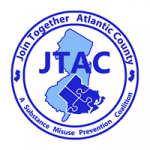
Heroin Addiction: Ophthalmologist Point of View "Drug addicts per say can look like anyone".
Recorded
December 1, 2017
Archived
December 1, 2017
06:33 minutes
0:00 / 0:00
Id:
APP432876
Description
This is an interview with a Dr.Cheryl Mitchell M.D who is an ophthalmologist in private practice in New Jersey. She gives us insight on her experience with treating heroin addicts.Curtis: I’m interviewing Dr. Cheryl Mitchell M.D who is a physician in private practice in New Jersey as an ophthalmologist. An ophthalmologist is a medical doctor who specializes in the treatment of eye diseases and performs eye surgery. She will give you her experience as an ophthalmologist who is involved in the treatment of heroin addicts in a hospital setting.
Curtis: What has been your experience in hospitals with drug addicts?
Dr. Cheryl Mitchell M.D: Drug addicts per say can look like anyone, so you may not be aware of that they have a drug addiction unless they choose to disclose it. Most heroin addicts are not aware that heroin can be associated with the sudden lost of vision. I’ve seen patients unfortunately go blind in both eyes, if not diagnosed promptly they’re other problems with vision with heroin injection or heroin addicts and they include things such as double vision, diplopia, visual disturbances such as visual hallucinations, things that affect basically a person’s ability to function visually; see well enough to read, drive a car, go to work and these are sometimes very disturbing things that bring an heroin addict into a hospital setting for diagnosism potentially treatment.
Curtis: What is the body language of others when they see a drug addict?
Dr. Cheryl Mitchell M.D: The other hospital professionals typically try and be as professional and keep their personal feelings separate from their function as acting as an professional, but sometimes people may look frightened, they may not know what to expect their previous experience with drug addicted patients often may affect them in a very personal way, sometimes they’ve seen people entreated them as individuals and seemed a whole spectrum of how it affects the families and this can take a very personal, emotional, psychological effect on the providers involved in the care of the drug addictive individuals, because many times they have seen this, they’ve realized that it affects individuals as well as the people that they care about. Many times some individuals really are trying to, will come into a hospital as a means of, for a treatment program, they really are trying to change their life, or go through what we call medically controlled drug withdraw program. Fortunately on the other hand there’s also a high rate of return, meaning individuals who may have successfully appeared to have gone through a successful withdraw, unless they are followed closely outside of a hospital setting with on going of therapy, an outpatient program many times they frequently relapse and that’s the unfortunate part of heroin addiction per say.
Curtis: Are you aware of any kinds of drugs used to treat drug addicts, specifically heroin addicts?
Dr. Cheryl Mitchell M.D: The drugs we use are things that just basically try to lessen the side effects of withdraw, maintain stability of the cardiovascular system, we give people hydration, we monitor them, many times they are given other types of relaxants or incentives that lessen the severities of the withdraw effects per say. A drug called narcan that’s used in an ambulance, or in some states, family members may also be given narcan so they can administer in a home setting if they live with a drug addictive individual and this can often prevent a person from dying.
Curtis: How do these drug addicts look, as far as their face, body, what they wear, etc.?
Dr. Cheryl Mitchell M.D: Sometimes heroin addicts will do things such as hide areas on their arms and legs by keeping certain parts of their bodies clothed, so that other people will not see the sights where they inject the drug. In a setting of acute withdraw a person can look very differently, they can be very disheveled, they can be confused, they can sweat, their speech can be very difficult to understand, they can speak very quickly, what we called pressured of speech, and many times unfortunately they can be very combative to other individuals, or potentially can hurt themselves. So really it depends on the particular setting, the setting of an acute overdose, again a person can be near death, and they can exhibit many of the same signs a symptom of what we call cardiovascular collapse, where the heart can stop, they can stop breathing, and many times death can ensue.
Curtis: Dr. Cheryl Mitchell, thank you for your perspective.
Participants
-
Dr. Cheryl Mitchell M.D
-
Curtis Brown